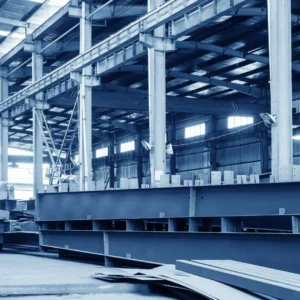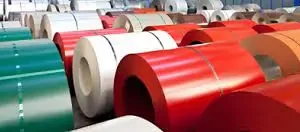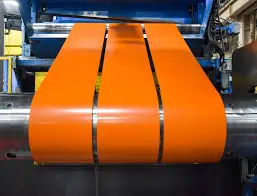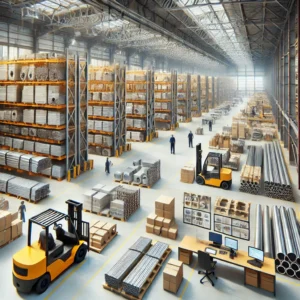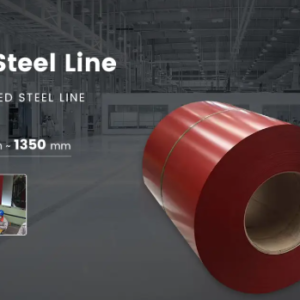Introduction to Galvanized Steel Coils:Midwest Steel Supply

Galvanized steel coils (pipe coil brands or strip coil brands) are an essential resource in the infrastructural development, manufacturing, and building industries all over the world. These steel products pass either through hot-dip galvanization or electro-galvanizing processes whereby they are coated with zinc to prevent corrosion. The outcome is a stronger material than steel in terms of its strength coupled with a much longer service life than steel, even in industrial areas, humid or salt-prone coastal areas.
The global galvanized steel coil market is highly diversified in terms of shapes and types- flat strip coils to be processed further, pipe coils to be used in tubular work, and special grades with choice coating thickness. By 2025, the price in the Middle East, Africa, and China incorporates the impact of costs of raw materials plus the fluctuations in the price of zinc, conditions of shipping and cyclical demand within the regions.
Galvanized Steel Pipe Coil
A galvanized steel pipe coil refers to coiled steel intended for tubular production. These coils are often slit to narrow widths and then formed into pipes or tubes for applications in construction scaffolding, fencing, water distribution, and industrial frames. Pipe coils typically have heavier zinc coatings for outdoor durability.
Galvanized Steel Strip Coil
A galvanized strip coil is a flat, continuous steel strip coated with zinc. It is used in roofing, cladding, ducting, automotive parts, and light structural applications. These coils can range from narrow strips to full-width coils exceeding 1.2 meters. Coating thickness, expressed as zinc mass per square meter (e.g., Z90, Z275), directly influences corrosion resistance and price.
Price Trends in 2025
Middle East
The Middle East remains a significant consumer of galvanized steel due to large-scale infrastructure projects, oil and gas sector requirements, and high demand for corrosion-resistant materials in coastal climates. Prices for galvanized steel pipe coils in 2025 generally range between $500 and $700 per ton for bulk imports from Asian suppliers. Direct purchases from Middle Eastern distributors are slightly higher, typically $650 to $850 per ton, reflecting import duties, inland freight, and distributor margins.
Galvanized steel strip coils in the region are priced between $800 and $950 per ton for standard thicknesses. Higher coating weights or custom dimensions push prices above $1,000 per ton. The Gulf Cooperation Council (GCC) markets—such as Saudi Arabia and the UAE—tend to have higher averages due to stringent quality specifications for construction steel.
Africa
African markets vary widely depending on the country’s industrial base and import reliance. Northern African nations often align with Middle Eastern pricing due to proximity and trade ties. In East Africa, galvanized pipe coils delivered from China or India land at around $520 to $750 per ton depending on port access and local demand. Inland countries may see additional transport surcharges of $50 to $80 per ton.
For galvanized strip coils, African buyers typically pay $820 to $980 per ton for imports. However, large-volume buyers—particularly in South Africa or Egypt—can negotiate lower rates closer to global averages. Smaller projects often rely on local stockists, which can push the per-ton price past $1,000 due to smaller lot sizes and warehousing costs.
China
As both a major producer and consumer, China sets a benchmark for galvanized steel pricing worldwide. In 2025, galvanized steel pipe coil prices in Chinese domestic markets generally range from $480 to $650 per ton, depending on grade, coating, and order volume. Export-oriented mills often offer FOB pricing in the $420 to $600 per ton range for standard pipe coil specifications, making Chinese suppliers some of the most competitive globally.
Galvanized strip coil prices in China typically fall between $850 and $1,050 per ton for standard commercial grades. Premium products with higher coating weights or advanced surface treatments can exceed $1,100 per ton. Chinese mills maintain a price advantage through high production volumes, proximity to zinc smelters, and efficient port logistics.
Factors Influencing Prices in 2025
Raw Material Costs
The base price of hot-rolled coil (HRC) steel directly affects galvanized coil pricing. Fluctuations in iron ore, coking coal, and scrap steel prices ripple through the galvanized market.
Zinc Prices
Zinc is a major cost component for galvanization. Any volatility in global zinc markets—due to mining output, energy prices, or geopolitical issues—has an immediate effect on coil prices.
Energy and Production Costs
Electricity and natural gas costs influence smelting and rolling operations. Regions with cheaper energy can maintain lower steel prices, as seen in parts of China and the Middle East.
Transportation and Logistics
Shipping rates, port handling fees, and inland freight charges can make a significant difference. In 2025, freight costs remain elevated compared to pre-2020 levels, affecting delivered prices in Africa and the Middle East.
Demand Cycles
Seasonal demand for construction and manufacturing projects creates price swings. For example, Middle Eastern demand peaks in cooler months when construction accelerates, while Chinese domestic demand rises ahead of government infrastructure rollouts.
Where to Find the Lowest Prices
For galvanized steel pipe and strip coils, Chinese midwest and coastal industrial provinces—such as Hebei, Shandong, and Jiangsu—are consistently among the cheapest sources. These regions benefit from high-capacity mills, streamlined supply chains, and direct access to export ports. Buyers purchasing full-container or full-vessel loads can achieve prices at the lower end of global ranges.
In Africa, the lowest landed costs are usually available at major ports with direct shipping routes from Asia, such as Mombasa, Durban, and Alexandria. Inland buyers face higher costs due to trucking or rail transport from ports.
Middle Eastern buyers can reduce prices by consolidating orders through regional importers who negotiate directly with Asian mills. The economies of scale achieved through combined shipments can lower per-ton costs significantly.
Buyer Strategies for 2025
Bulk Purchasing
Ordering larger volumes from mills or consolidating purchases with other buyers helps secure better unit pricing.
Flexible Specifications
Opting for standard coil widths, thicknesses, and coating weights avoids customization surcharges and allows suppliers to use existing production runs.
FOB vs. CIF Decisions
For buyers with reliable freight partners, FOB (Free On Board) purchasing from Chinese or Middle Eastern suppliers can cut costs. For those preferring turnkey delivery, CIF (Cost, Insurance, Freight) pricing offers predictability but may be slightly higher.
Monitoring Commodity Markets
Tracking zinc and steel billet prices can help buyers time purchases during downward cycles, maximizing cost efficiency.
Market Outlook Beyond 2025
The galvanized steel market is likely to be strong with existing infrastructure investment, demand of houses and need of materials that are free of corrosion in the renewable energy works like solar farms and towering wind machines. But volatility in prices would continue to occur, fuelled by commodity markets and changing trade policy.
China could continue to dominate the world in production and export thereby exerting downward pressure on the global prices. Most of the galvanized coil requirements will still have to be imported into the Middle East and Africa with minor domestic capacity increases being developed in the Gulf states and South Africa.
Conclusion
Galvanized steel pipe coil prices of imports in Middle East would cost approximately between 500 and 700 dollars per ton, whereas galvanized strip coils are expected to cost an average of 800 to 950 dollars per ton. The trends are the same in African markets where transport to the interior contributes to prices. China has continued to lead the price as the coils of pipes can be sold at a low price of 420 dollars a ton FOB and the coils of strips at 850 to 1050 dollars a ton.
Differences in prices across locations are influenced by production capacity, logistics, energy prices and commodity market. Directly sourcing Chinese mills or having consolidated imports into major ports are the best approaches to buying among the buyers who insist on achieving the lowest prices. Business that informs of price relationship in a given region and follows the trend in raw materials can purchase galvanized steel at reasonable prices and work on optimal purchasing strategies to make the prices stable in the ever-changing global market.

